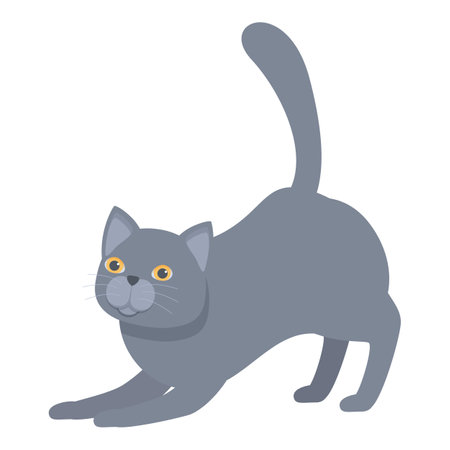Introduction to British Cat Breeds
Britain boasts a rich heritage of feline companions, with several cat breeds originating from its historic towns and countryside. These breeds not only reflect the nations fondness for pets but also mirror aspects of British culture—ranging from aristocratic elegance to hearty resilience. Understanding the distinct features and personalities of these popular breeds is essential for any cat lover in the UK, as each breed has its own charm and specific grooming requirements. Below is an overview of some of the most beloved and unique British cat breeds:
| Breed | Key Features | Personality Traits |
|---|---|---|
| British Shorthair | Stocky build, round face, plush coat | Calm, affectionate, independent |
| Burmese | Sleek body, short coat, expressive eyes | Sociable, playful, intelligent |
| Scottish Fold | Folded ears, round body, soft fur | Gentle, friendly, adaptable |
| Cornish Rex | Wavy coat, slender frame, large ears | Energised, mischievous, loving |
This comprehensive overview will guide you through the grooming needs and care tips tailored for each breed, ensuring your British feline companion remains healthy and happy.
2. Common British Cat Breeds: Traits and Temperament
Britain is home to a delightful array of cat breeds, each with distinct features and charming personalities. Understanding the key characteristics and typical behaviours of these breeds can help owners provide the best possible care, particularly when it comes to their grooming needs. Let’s take a closer look at some of the most beloved British cat breeds.
Popular British Breeds
| Breed | Physical Traits | Temperament |
|---|---|---|
| British Shorthair | Robust build, round face, dense plush coat, copper or gold eyes | Calm, affectionate, independent, good with families and children |
| Scottish Fold | Distinctive folded ears, round body, large eyes, soft coat (short or long) | Gentle, sociable, playful but not overly demanding |
| Burmese (British variant) | Sleek body, short glossy coat, expressive eyes | Lively, friendly, people-oriented |
| British Longhair | Similar to Shorthair but with a longer, flowing coat | Placid, loving, less active than shorthaired cousins |
The British Shorthair
This iconic breed is instantly recognisable thanks to its plush “teddy bear” appearance and sturdy frame. British Shorthairs are typically quite laid-back and enjoy a quiet environment. They’re not particularly vocal or clingy but form strong bonds with their humans. Their thick coats require regular brushing to prevent matting and manage shedding.
The Scottish Fold
The Scottish Fold stands out for its unique folded ears—a result of a natural genetic mutation. These cats are affectionate and get along well with children and other pets. Their temperament is gentle and easy-going, making them popular in British households. Both short- and long-haired varieties benefit from weekly grooming to maintain coat health.
Other Noteworthy Breeds
The Burmese (particularly the British variant) is known for its lively nature and love of companionship. The British Longhair combines the classic looks of the Shorthair with a luxuriously soft coat that needs more frequent grooming sessions. Each breed brings its own blend of charm and grooming requirements—understanding these helps create a harmonious home for both cats and their owners.

3. Grooming Basics: Why It Matters in the UK
Grooming is not just about keeping your cat looking presentable—it plays a crucial role in maintaining their overall health and wellbeing, especially considering the unique British climate. With frequent rain, cool temperatures, and fluctuating humidity, cats living in the UK face grooming challenges that may differ from those in other countries.
The Impact of the British Climate on Cat Grooming
British weather can influence how often you need to groom your cat and what specific care they require. Damp conditions can lead to matting, especially in long-haired breeds like the British Longhair or Persian. Conversely, centrally heated homes during colder months may cause dry skin or increased shedding. Regular grooming helps to manage these issues by removing loose fur, preventing tangles, and allowing you to check for signs of skin problems or parasites.
Benefits of Regular Grooming Routines
| Benefit | Description | UK-Specific Considerations |
|---|---|---|
| Reduces Shedding | Removes dead hair and reduces fur on furniture | Important during seasonal changes (e.g., spring moulting) |
| Prevents Matting | Keeps coat smooth and free from painful knots | Vital for long-haired breeds prone to tangles due to damp weather |
| Promotes Healthy Skin | Distributes natural oils across the coat | Helps combat dryness caused by indoor heating during winter |
| Early Detection of Health Issues | Allows owners to spot fleas, ticks, or skin irritations early on | Regular checks are crucial as parasites thrive in mild, wet climates |
| Strengthens Bonding | Builds trust and comfort between cat and owner | An ideal opportunity for gentle interaction during cosy evenings indoors |
Establishing a Grooming Routine for Your British Cat
A consistent grooming schedule is key. For short-haired cats like the British Shorthair, brushing once or twice a week may suffice. However, long-haired varieties typically require daily attention. Always use appropriate brushes and combs designed for your cat’s coat type, and consider incorporating regular nail trims and ear checks into your routine. By adapting your approach to suit both breed and climate, you’ll help ensure your feline friend stays comfortable, healthy, and content throughout the year.
4. Tailored Grooming Tips for Specific British Breeds
When it comes to grooming British cats, a one-size-fits-all approach simply doesn’t work. Each breed has its own unique coat type and requirements, making tailored care essential for their wellbeing and comfort. Below, you’ll find practical advice, tools, and techniques specifically suited to the most popular British cat breeds.
Grooming Advice by Breed
| Breed | Coat Type | Recommended Tools | Key Techniques |
|---|---|---|---|
| British Shorthair | Dense, plush short coat | Bristle brush, rubber grooming mitt | Brush twice weekly to remove dead hair; focus on gentle strokes to avoid damaging undercoat. |
| British Longhair | Thick, semi-long fur with undercoat | Slicker brush, wide-tooth comb | Daily brushing to prevent matting; use a comb for detangling sensitive areas like armpits and behind ears. |
| Burmese (British type) | Sleek, fine short coat | Soft bristle brush, grooming glove | Weekly brushing; polish coat with a damp cloth for extra shine. |
Essential Seasonal Care
Cats in the UK experience seasonal changes that can affect their coats. During spring and autumn moulting seasons, increase the frequency of brushing sessions to help manage shedding. For longhaired breeds, consider using a de-shedding tool during these periods to keep loose fur under control and reduce hairballs.
Paws and Claws Maintenance
British cats often enjoy outdoor explorations. Regularly check their paws for debris or small injuries after garden strolls. Use claw clippers designed for pets—never human scissors—to trim nails every few weeks, especially if your cat is primarily indoors.
Bathing: A British Perspective
Most British breeds rarely require baths thanks to their self-cleaning habits. However, if your cat gets into something sticky or particularly muddy after a rainy day in the allotment, use a mild cat shampoo and lukewarm water. Always dry thoroughly with a soft towel and keep them indoors until fully dry to avoid chills.
5. Preventing and Managing Common Grooming Issues
How to Identify Typical Grooming Problems in British Cat Breeds
British cat breeds, such as the British Shorthair and British Longhair, each come with unique grooming requirements. Owners commonly encounter issues like matting, excessive moulting, and hairballs. Early identification is crucial for maintaining your cat’s coat and overall health.
Common Signs of Grooming Problems
| Issue | How to Spot It |
|---|---|
| Matting | Tangled, clumped fur often found behind ears, under legs, or along the back |
| Moulting | Loose hair on furniture, clothing, or visible bald patches on your cat |
| Hairballs | Coughing or vomiting up compacted hair; decreased appetite; constipation |
Preventative Measures for British Cats
- Regular Brushing: For shorthair breeds, brush at least twice a week. Longhaired cats require daily brushing to prevent tangles and reduce shedding.
- Proper Diet: Feed a high-quality diet rich in Omega-3 and Omega-6 fatty acids to maintain a healthy coat and minimise excessive moulting.
- Hydration: Encourage water intake to support skin and coat health.
- Appropriate Tools: Use slicker brushes or grooming mitts designed for British coats to remove loose hair efficiently.
Troubleshooting: Handling Common Grooming Challenges
| Problem | How to Handle It |
|---|---|
| Matted Fur | If small, gently tease out with fingers or a dematting comb. Never use scissors near the skin. Severe matting may require professional attention from a UK-qualified groomer. |
| Excessive Shedding | Increase brushing frequency during spring and autumn moulting seasons. Consider adding vet-approved supplements to their diet if recommended. |
| Hairball Management | Offer specialised hairball control food or paste. Regular grooming will also reduce the amount of hair ingested. |
When to Seek Professional Help?
If you notice persistent skin irritation, large areas of matting, behavioural changes, or signs of discomfort during grooming sessions, consult your local veterinary practice or a certified feline groomer familiar with British cat breeds. Timely intervention ensures your cat remains comfortable and well-groomed throughout the year.
6. Integrating Grooming Into Everyday British Life
Incorporating regular grooming routines into a busy British household can seem daunting, but with a bit of structure and some practical know-how, it becomes second nature. Whether you live in a bustling London flat or a cosy cottage in the countryside, establishing a grooming schedule tailored to your lifestyle ensures your cat remains healthy and content.
Practical Steps for Busy Pet Owners
Time is precious, so efficiency matters. Here’s how you can seamlessly add grooming to your weekly routine:
| Grooming Task | Frequency | Tips for Busy Owners |
|---|---|---|
| Brushing | 2-3 times per week (long-haired breeds); once weekly (short-haired breeds) | Keep a brush near your favourite chair and do short sessions during evening telly. |
| Nail Clipping | Monthly | Use treats to reward calm behaviour; clip after playtime when your cat is relaxed. |
| Ear Cleaning | Monthly or as needed | Combine with other tasks for efficiency; use cotton pads moistened with vet-approved solution. |
| Eye Wiping | As needed (especially for Persians or British Shorthairs) | Keep soft cloths handy in the kitchen or bathroom for quick wipes. |
Cultural Considerations in the UK Home
The traditional British home often values neatness and order. To maintain this whilst caring for your feline friend:
- Allocate a specific spot—perhaps by the Aga or in the conservatory—for grooming supplies, keeping clutter at bay.
- If you have children, involve them in gentle brushing sessions; it teaches responsibility and strengthens bonds.
Clever Time-Saving Strategies
- Integrate grooming into family routines, such as Sunday afternoons or after supper.
- If youre heading out for a ramble or tending to the garden, take five minutes beforehand to check your cat’s coat and paws, especially if they’re allowed outdoors.
Mental Health Benefits for Owners
A regular grooming routine isn’t just beneficial for your cat—it also provides moments of calm and connection amid a busy British lifestyle. It can be an ideal time to unwind after work or catch up on local news while stroking your pet. By embedding grooming into daily life, you foster both feline health and household harmony—a true hallmark of British pet ownership.


